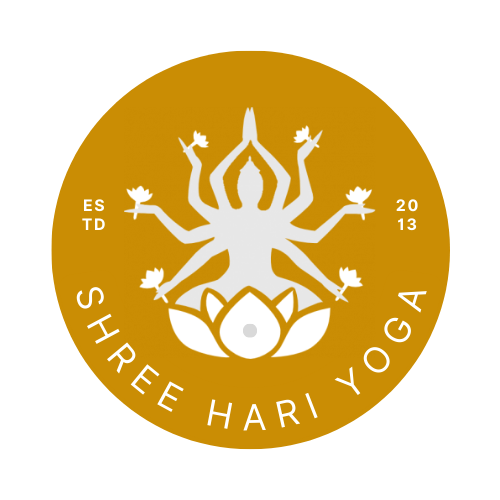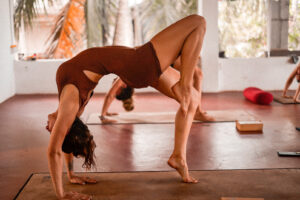Table of Contents
ToggleThe Challenges of Practicing Yoga as You Age
Yoga has gained widespread popularity worldwide for its holistic approach to physical and mental well-being. Its appeal lies in its ability to cater to individuals of all ages, offering a path toward flexibility, inner peace, and improved overall health. Whether you’re a young adult seeking a vigorous workout or a senior aiming to maintain mobility, yoga has long welcomed all into its fold.
However, aging is a natural part of life, and it brings a unique set of challenges for those who wish to continue practicing yoga. As we progress through different life stages, our bodies undergo various changes that influence our physical capabilities and mental outlook. These changes, though natural, can present hurdles for yoga practitioners and alter their practice in unexpected ways.
In this context, adapting the practice of yoga becomes crucial. The challenges that come with age shouldn’t discourage anyone from embracing yoga; instead, they highlight the importance of modifying the practice to suit the evolving needs of our bodies. By acknowledging and addressing these challenges, individuals can continue to experience the many benefits of yoga well into their golden years. As we explore the specific challenges faced by aging yoga practitioners, it becomes clear that adapting one’s practice is a testament to yoga’s enduring spirit.
Physical Limitations
As we gracefully age, our bodies experience changes that affect our physical abilities and influence how we approach yoga. One of the main challenges is the gradual decline in flexibility, joint mobility, and muscle strength. The suppleness and elasticity we had in our younger years may diminish, making familiar poses feel more difficult.
Aging bodies often experience stiffness, especially after inactivity. This stiffness, combined with a reduced range of motion, can make it harder to perform poses with the same depth and precision as before.
In response, it’s essential to approach yoga with patience and self-awareness. Pushing beyond current limits can lead to discomfort or injury. Instead, yoga encourages acceptance and non-attachment, reminding us that it’s not about perfect poses but about honoring our body’s current state. The mat becomes a space for self-discovery and gentle progress.
Using props like blocks or straps can support proper alignment and ensure safety. Every individual’s journey is unique, and modifying poses allows continued enjoyment of mindful movement and breath, even as physical abilities change.
Joint and Muscle Health
As we age, caring for our joints and muscles becomes even more important. These vital parts of our body become more vulnerable to injuries like strains, sprains, and tears.
To prevent injury, it’s important to listen to our bodies. The “no pain, no gain” mindset should be replaced with a more mindful approach. Overstretching or pushing too hard can cause harm—what once felt like a healthy stretch might now lead to setbacks.
With age comes wisdom. Instead of chasing ambitious goals, yoga becomes about understanding and accepting our bodies. This isn’t about giving up—it’s about practicing self-respect and self-care.
Yoga’s principle of ahimsa (non-harming) is especially important here. Practicing compassion toward ourselves, adjusting the practice, and letting go of comparison allow us to move safely and confidently.
Balancing Act
As the years go by, our sense of balance may decline due to changes in inner ear function, vision, and muscle strength. For yoga practitioners, this can make balancing poses more challenging.
Fortunately, there are simple ways to maintain and even improve balance. Practicing near a wall or using a chair offers extra support, allowing you to explore balance poses safely. These tools remind us that small, steady progress is more important than perfection.
Engaging regularly with balance-challenging poses helps rebuild stability. Just like muscles strengthen through use, balance improves through practice. Over time, these efforts help us stay grounded and confident in movement.
Mind Over Matter
Aging brings mental and emotional shifts—stress, anxiety, and body image concerns can influence how we experience yoga. These changes may affect our focus and overall mindset during practice.
Yoga offers powerful tools to address these challenges. Breathwork, meditation, and mindful movement can support emotional well-being. These practices create space to calm the mind and nurture inner peace.
That said, calming the mind takes effort, especially when thoughts race. Incorporating a few minutes of meditation each day can help you stay present and focused.
Choosing a peaceful setting for your practice can also improve concentration. Whether it’s the sound of birds, the warmth of sunlight, or the rhythm of your breath, creating a soothing environment helps turn attention inward and fosters a deeper mind-body connection.
Adapting the Practice
One of yoga’s greatest strengths is its adaptability. As our bodies change with age, our practice can evolve in beautiful ways. This is not a limitation—it’s a celebration of our body’s wisdom.
Yoga offers many styles that suit different needs. Restorative yoga emphasizes relaxation and renewal, supporting the body through gentle, supported poses. Slow-flow and yin yoga provide a balance between movement and stillness, encouraging flexibility while respecting the body’s natural rhythms.
There is no one-size-fits-all approach. Each person’s body is unique, shaped by their own experiences. Adapting your yoga practice is an act of self-love and a reminder that yoga is about growth, not rigidity.
Seeking Guidance
As we age, the guidance of a qualified yoga instructor becomes especially valuable. A skilled teacher can offer personalized support, ensuring a practice that is both safe and fulfilling.
Whether you’re new to yoga or a seasoned practitioner, an experienced instructor can help tailor the practice to fit your needs. They can suggest modifications that respect your physical boundaries and help prevent injury.
Their insight extends beyond postures—they help create a practice that aligns with your life story, whether it’s one of healing, recovery, or resilience.
Above all, their presence ensures your journey is safe, empowering, and full of meaning. Seeking their guidance reflects a deep respect for your body and the practice itself.
Conclusion
Aging brings challenges, but it should never stop you from enjoying the activities that support your well-being. Yoga, with its adaptability and mindfulness, offers a powerful way to stay active, flexible, and connected to yourself as the years go by.
By embracing the changes in your body, making thoughtful adjustments, and nurturing the mind-body connection, you can continue to benefit from yoga throughout your life. Remember, yoga is a lifelong journey—while the path may shift, the rewards are always within reach.
FAQs on Yoga and Aging
How can I improve flexibility and mobility as I age?
Regular yoga focused on gentle stretches and poses that target flexibility can improve mobility. Incorporate dynamic warm-ups and mindful stretches to avoid strain.
What if I have joint pain or arthritis? Can I still practice yoga?
Yes, but consult your healthcare provider first. Work with a knowledgeable yoga instructor to modify poses that support your joints and reduce discomfort.
How can yoga help with balance and stability as I age?
Balance-focused poses like Tree Pose or Warrior III engage the core and enhance coordination. Use props or practice near a wall for added stability.
How can yoga benefit my mental well-being as I age?
Yoga supports mental health through breath control, mindfulness, and meditation. Regular practice can reduce stress, improve cognitive function, and support emotional balance.
What should I do if I have a chronic health condition or take medications?
Always consult your doctor before starting or modifying a yoga routine. They can recommend safe movements and guide you on precautions.
Can I start yoga in my later years if I’ve never practiced before?
Absolutely. Yoga can be started at any age. Look for beginner or senior-friendly classes to learn proper technique in a safe environment.
How do I find a suitable yoga class or instructor for my age and abilities?
Seek out classes labeled “gentle yoga,” “senior yoga,” or “beginner’s yoga.” Choose instructors experienced with older adults who offer pose modifications and personalized guidance.





